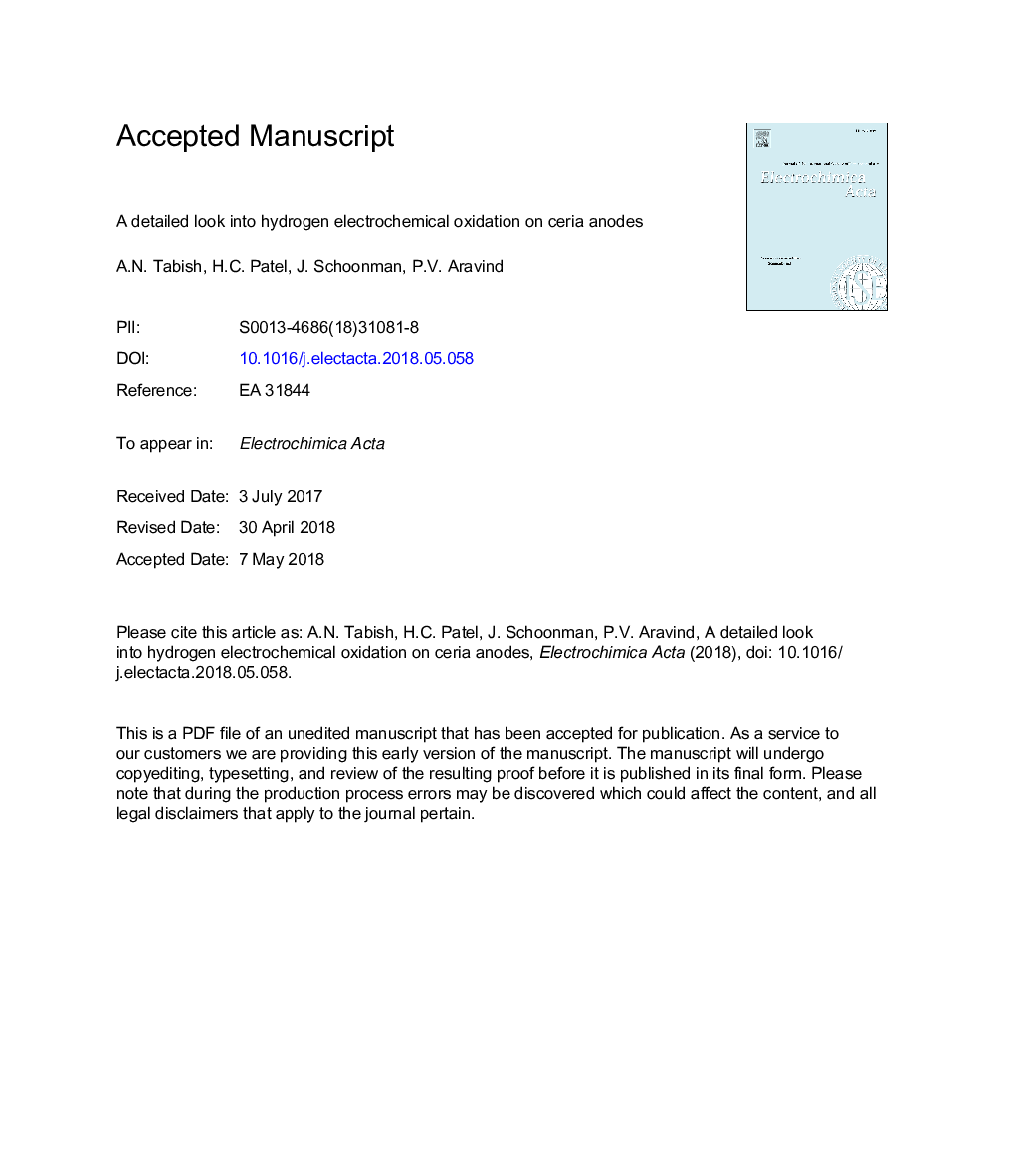| Article ID | Journal | Published Year | Pages | File Type |
|---|---|---|---|---|
| 6602063 | Electrochimica Acta | 2018 | 21 Pages |
Abstract
Using the Nernst-Planck-Poisson model and a detailed reaction mechanism, we studied the hydrogen electrochemical oxidation on a ceria anode. Resistances caused by surface kinetics, and bulk transport of oxide-ion vacancies and electrons are computed individually to identify the dominant resistive process. The effect of operating conditions like temperature and gas-phase composition on the polarization resistance is evaluated and compared with the experimental data obtained by Electrochemical Impedance Spectroscopy (EIS). The rate-determining step is found to be the charge-transfer reaction in which hydrogen adsorbs at the surface oxide ions and forms hydroxyls along with the charge-transfer to adjacent cerium ions. Based on the rate-determining step, the exchange-current density is also calculated and validated with the experimental data.
Keywords
Related Topics
Physical Sciences and Engineering
Chemical Engineering
Chemical Engineering (General)
Authors
A.N. Tabish, H.C. Patel, J. Schoonman, P.V. Aravind,
